Can you tell us a little background about you?
Laura: “I am a retired family doctor and practiced locally for about 30 years and retired 10 years ago. I grew up with a love of the outdoors imbued by my parents and appreciating nature and physical activities outdoors. And then with retirement, we’ve been spending a lot of time birding.
Charles: “I have a doctorate in organic chemistry and taught chemistry, including a course called environmental chemistry, where we looked at a variety of energy issues, in particular. Along the way, I started bird watching, casually at first. Then that got pretty out of control, and I changed careers and started working professionally on conservation, particularly of migratory birds, for the last 10 years of my career working on migratory shorebirds across the entire Western Hemisphere, an enormous scale. I was fortunate enough to get to travel and meet a lot of people of wildly different backgrounds in that work. That, in turn, led to this growing understanding of what humans are doing to this good, green planet and the places where we could make a difference. Like Laura, I also retired about 10 years ago, and since then I have been doing volunteer work on a variety of bird-related projects and serving on the board of a few conservation organizations. I was honored to be a co-author of my late friend Peter Vickery’s monumental book, The Birds of Maine.
Charles on favorite places to travel for birding: “We just got back from a wonderful 2 weeks in Guyana, which is not a country many people visit, but spectacular. We had a wonderful time. We went to Peru a few years ago, basically a 70th birthday celebration for me, and we had a great time there, including at two Amazon Conservation lodges. The base of this was a sabbatical year I spent in 1992-3 in Chiapas with Pronatura Sur, and I’m still in love with the people, places, and birds of Mexico. So in short, I’ll say Mexico and northern South America – that’s a lot of territory!
Laura: “What Charles didn’t mention was that he was in Guyana in 2001 and hadn’t been back since then. And I remember him telling me how they climbed up onto some rise where they could see to the horizon, uninterrupted forests for miles and miles where there was no evidence of human activity, and how much that impressed him and how much he loved it. So I was a little worried about going to Guyana now, I didn’t know if we would experience that, but we did. We flew over a seemingly unending rainforest with no evidence of human activity. There was a little bit, a few gold mines, but not at the scale we’ve seen elsewhere.
What initially inspired you to support environmental causes generally and to help conserve the Amazon rainforest more specifically? Why do you think it is important to protect it?
Laura: “It ties a little bit back to what I said about how I grew up with a love of the outdoors inspired by my parents. Then gradually as an adult and through Charles’s influence too, I started to become more aware about losing beautiful places in the world, and then an increasing awareness about climate change and the link between that and the Amazon Rainforest.”
Charles: “In my case, it was that growing interest in birds and bird watching. Over a painfully short time frame, seeing a place that I used to love going to five years ago just got paved over. Seeing the pace of change over time, and, as Laura said, realizing that those local changes have an enormous global effect. What we see here on the coast of Maine is profoundly affected by whether there is illegal logging in a place far away from us and how all that connects. Now, fortunately, in our retired life, we have the ability to support groups like Amazon Conservation that are doing the things that we see as being so necessary and working towards those shared goals.”
How did you initially learn about Amazon Conservation?
Charles: “I think our first serious introduction to Amazon Conservation was when we stayed in Wayqecha in 2018. Later on that trip, we went down to Los Amigos Biological Station. We had a wonderful time there getting to know the staff and a little bit more about the conservation work. So initially, it was just by being in the lodges, and then you guys have done a wonderful job staying in contact with us as donors, and from a development point of view, nurturing that interest for us.
Laura: “Perusing the website and Instagram feed, I saw a lot more I didn’t know about the projects. The website is really good. It’s like a textbook of how to do conservation, with concrete examples.”
Why did you choose to support Amazon Conservation? What makes Amazon Conservation special to you?
Laura: “One big reason is that it’s a highly rated organization with low overhead, as highlighted in your recent posts.”
Charles: “That’s crucial to us. If we’re even thinking about supporting an organization, that’s step one, so congratulations on those ratings.”
Do you have a favorite program or initiative that stands out to you?
Laura: “One of the interesting things we encountered at Los Amigos was a project training rangers to use drones to monitor the forest. I don’t know if that was a project that you guys initiated or if the rangers came and said hey, can we stay with you and do this training, but it was fascinating. I was also perusing your Instagram page and saw this post about Mennonites illegally logging and farming in the Amazon, and there were these amazing photos showing the tracks of land that had been destroyed.”
Charles: “For me, less than a specific project – and there are a number of them that are fabulous – it’s the wisdom of the overarching approach. That we’re going to have good science, that our work is going to be science-driven and we’re going to generate new science as needed. We’re going to empower communities so that it’s not some outsider group that is taking action that doesn’t help the local community. Instead, we’ll give that local community the motivation to continue the project and to be supportive of it, rather than feeling that Amazon Conservation somehow is a competitor for their lands. And thirdly, actually taking action that is driven by that science. Those three components that you articulate on the website are super important. It’s that overarching strategy of science, community action, and on-the-ground activity that says to me, these people have thought about this. If I can add my grain of sand to the mountain they’re building, I want to do that.”
What would you say to other environmentally-conscious people who want to make a difference in the Amazon and help fight climate change?
Laura: “We have to act now before it’s too late. Protecting the Amazon is securing a healthy future for humanity.”
Charles: “I think that Amazon Conservation is absolutely on the right path. Nothing novel to add there, but I would say to our friends, as we already have, that there is a group where your investment of money or time can yield high returns by being part of this very, very well-thought-out and incredibly well-motivated activity, at a scale that matters. We’re talking about 120 million acres. It’s just a staggering size. That sense of scale is really important.”
Laura: “And obviously there are individual things that people can do – like decreasing the use of single-use plastics, working on your carbon footprint, etc. – that’s something that takes the world to make an impact. But it’s good to start at home.”
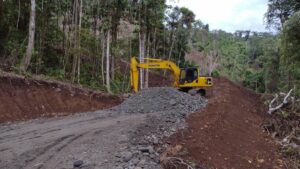 MAAP #204 analyzes a new road project entering the western sector of the Waorani Indigenous Territory, located in the heart of the Ecuadorian Amazon.
MAAP #204 analyzes a new road project entering the western sector of the Waorani Indigenous Territory, located in the heart of the Ecuadorian Amazon.
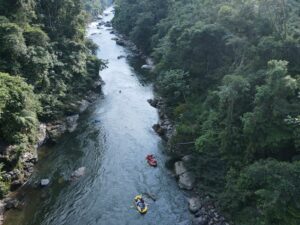
 The environmental news platform
The environmental news platform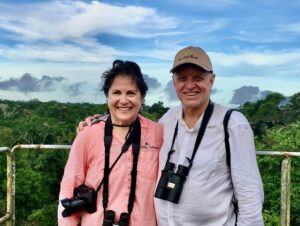 As we embark on a new year, we hope your restored energy and fresh beginning bring with them a renewed sense of purpose and inspiration for our planet. For those who are passionate about the environment and the conservation of the Earth’s most vital ecosystems, the Amazon stands as a beacon of both beauty and urgency. Retired conservationist Charles Duncan and retired family doctor Laura Blutstein recently shared what inspires them most about Amazon Conservation – the sheer scale and impact of the work.
As we embark on a new year, we hope your restored energy and fresh beginning bring with them a renewed sense of purpose and inspiration for our planet. For those who are passionate about the environment and the conservation of the Earth’s most vital ecosystems, the Amazon stands as a beacon of both beauty and urgency. Retired conservationist Charles Duncan and retired family doctor Laura Blutstein recently shared what inspires them most about Amazon Conservation – the sheer scale and impact of the work. 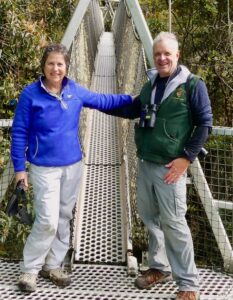 After a 15-year career in the conservation of migratory birds, Charles can attest to the need for a pragmatic approach to conservation. For him, the scale and approach of Amazon Conservation’s work gives him confidence in his support: “It’s that overarching strategy of science, community action, and on-the-ground activity that says to me, these people have thought about this. If I can add my grain of sand to the mountain they’re building, I want to do that.”
After a 15-year career in the conservation of migratory birds, Charles can attest to the need for a pragmatic approach to conservation. For him, the scale and approach of Amazon Conservation’s work gives him confidence in his support: “It’s that overarching strategy of science, community action, and on-the-ground activity that says to me, these people have thought about this. If I can add my grain of sand to the mountain they’re building, I want to do that.”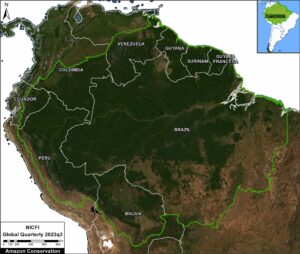 In March 2015, Monitoring of the Andean Amazon Program (MAAP) launched its first-ever report taking a look at the escalating gold mining deforestation in the Peruvian Amazon. Over the past 8 years, MAAP has continued to provide vital information via the latest technology to raise awareness and inspire solutions to protect one of the planet’s most vital ecosystems.
In March 2015, Monitoring of the Andean Amazon Program (MAAP) launched its first-ever report taking a look at the escalating gold mining deforestation in the Peruvian Amazon. Over the past 8 years, MAAP has continued to provide vital information via the latest technology to raise awareness and inspire solutions to protect one of the planet’s most vital ecosystems. 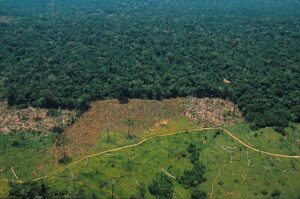 Through our Monitoring of the Andean Amazon Program (MAAP), we’ve been able to work with indigenous groups, local communities, and government agencies across the Amazon to share vital information on nature crimes and illegal deforestation. This year we supported 5 major government interventions against illegal gold mining in both the Peruvian and Ecuadorian Amazon. For example, on June 6, 2023, the National Police, the Navy, and the Specialized Environmental Prosecutor’s Office of Madre de Dios in Peru carried out a
Through our Monitoring of the Andean Amazon Program (MAAP), we’ve been able to work with indigenous groups, local communities, and government agencies across the Amazon to share vital information on nature crimes and illegal deforestation. This year we supported 5 major government interventions against illegal gold mining in both the Peruvian and Ecuadorian Amazon. For example, on June 6, 2023, the National Police, the Navy, and the Specialized Environmental Prosecutor’s Office of Madre de Dios in Peru carried out a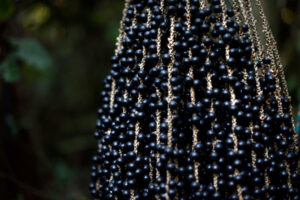 This past year, with support from our Bolivian sister organization
This past year, with support from our Bolivian sister organization  Our sister organization
Our sister organization 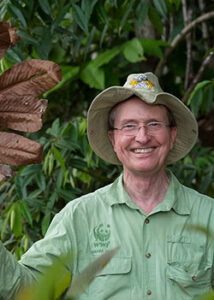 Thanks to funding from the Gordon and Betty Moore Foundation and the Fiddlehead Foundation, our
Thanks to funding from the Gordon and Betty Moore Foundation and the Fiddlehead Foundation, our 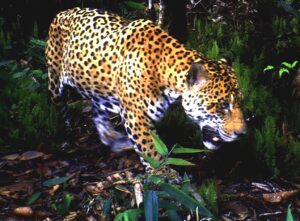
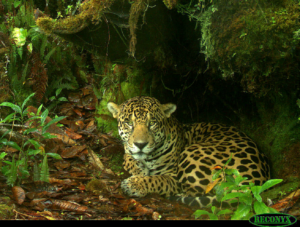 Thanks to your support, you are helping us build climate resilience in the Amazon by strengthening healthy and biodiverse wildlife populations and ensuring long-term forest health to withstand the worst impacts of climate change. Your contributions help us continue to improve our programs that protect jaguar habitat and populations, track forest and wildlife health, and host education programs with local communities to train local people in how to safely mitigate human-jaguar conflicts and sustainably manage local forests for healthy jaguar populations.
Thanks to your support, you are helping us build climate resilience in the Amazon by strengthening healthy and biodiverse wildlife populations and ensuring long-term forest health to withstand the worst impacts of climate change. Your contributions help us continue to improve our programs that protect jaguar habitat and populations, track forest and wildlife health, and host education programs with local communities to train local people in how to safely mitigate human-jaguar conflicts and sustainably manage local forests for healthy jaguar populations.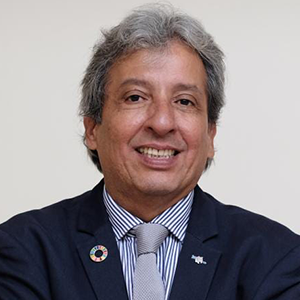 This year’s COP28 (United Nations Climate Change Conference), held in Dubai from November 30th to December 12th, brought together more than 190 governments to discuss global climate action. One of our board members,
This year’s COP28 (United Nations Climate Change Conference), held in Dubai from November 30th to December 12th, brought together more than 190 governments to discuss global climate action. One of our board members, 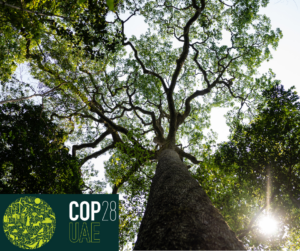
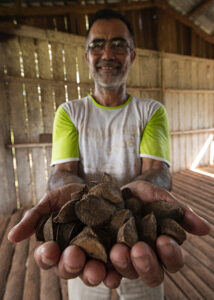
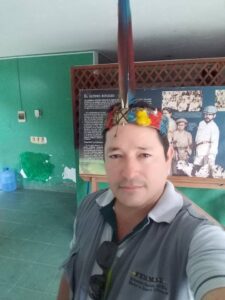
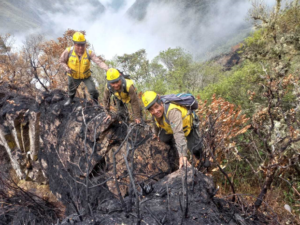 In a region with limited training, knowledge, and tools to prevent or combat fires that escape into forests, controlling fires is critical to minimize their damage to the greater forest and local communities. In response to ongoing droughts and illegal deforestation in the Beni Department in Bolivia, Abraham Pache Canchi, an Indigenous park guard is leading local fire prevention workshops to help local communities and governments be better prepared to swiftly respond to fires.
In a region with limited training, knowledge, and tools to prevent or combat fires that escape into forests, controlling fires is critical to minimize their damage to the greater forest and local communities. In response to ongoing droughts and illegal deforestation in the Beni Department in Bolivia, Abraham Pache Canchi, an Indigenous park guard is leading local fire prevention workshops to help local communities and governments be better prepared to swiftly respond to fires. The
The 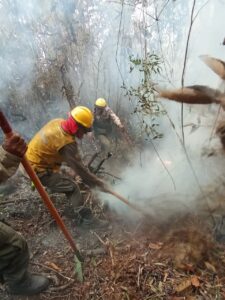
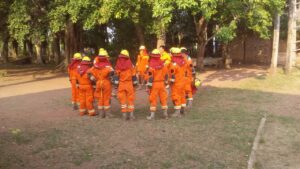 Your contributions are aiding us in encouraging local residents to opt for economic activities that mitigate the risk of fires and may even contribute to slowing their spread. Deforested areas are prone to fire, and fire can spread faster in less forested areas and areas with less diverse crops. Rather than expansive monocultures, we encourage forest-friendly alternatives to destructive economic activities such as sustainable honey, wild cacao, and high-altitude coffee. Product diversification is also important to build resilience in the region so that local income is less susceptible to damage to crops and forests are more fire resilient by being more robust and biodiverse.
Your contributions are aiding us in encouraging local residents to opt for economic activities that mitigate the risk of fires and may even contribute to slowing their spread. Deforested areas are prone to fire, and fire can spread faster in less forested areas and areas with less diverse crops. Rather than expansive monocultures, we encourage forest-friendly alternatives to destructive economic activities such as sustainable honey, wild cacao, and high-altitude coffee. Product diversification is also important to build resilience in the region so that local income is less susceptible to damage to crops and forests are more fire resilient by being more robust and biodiverse.